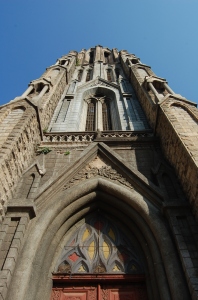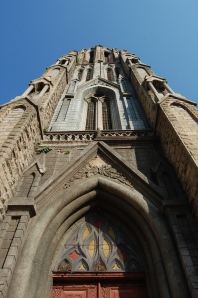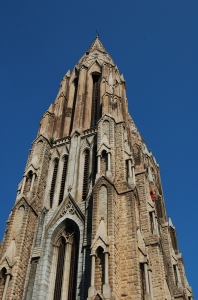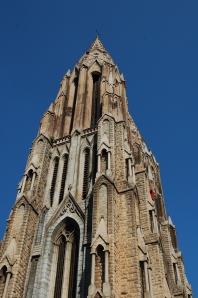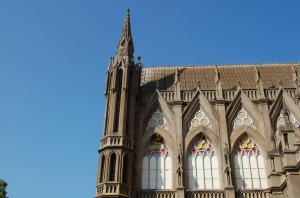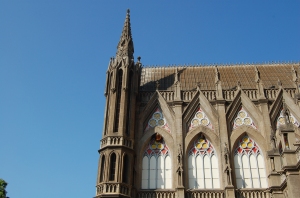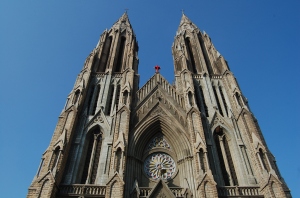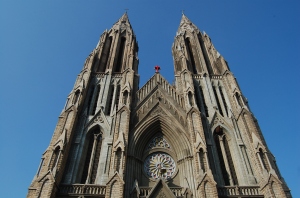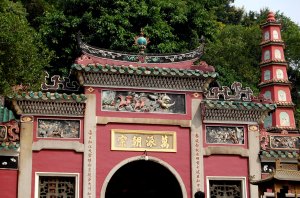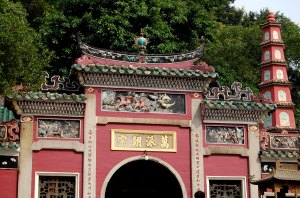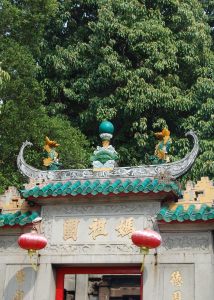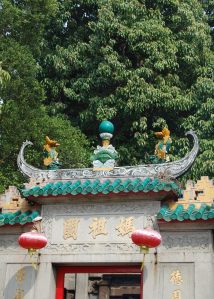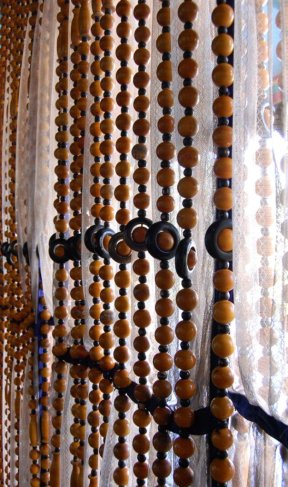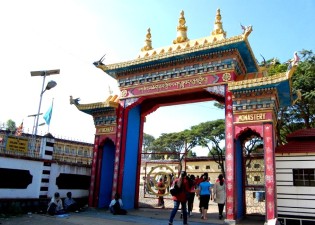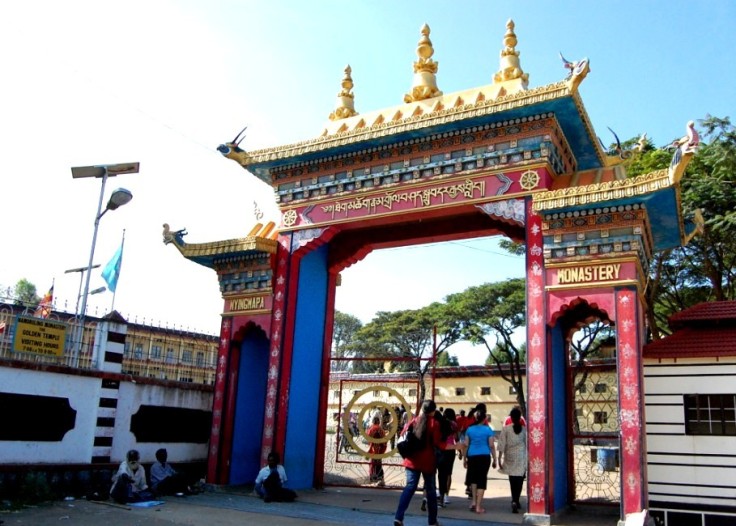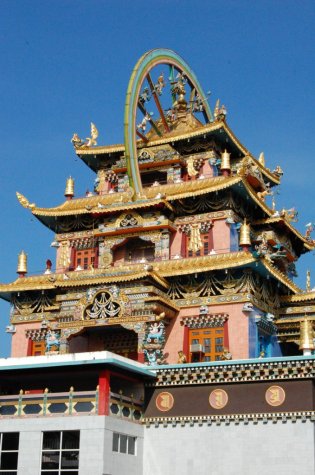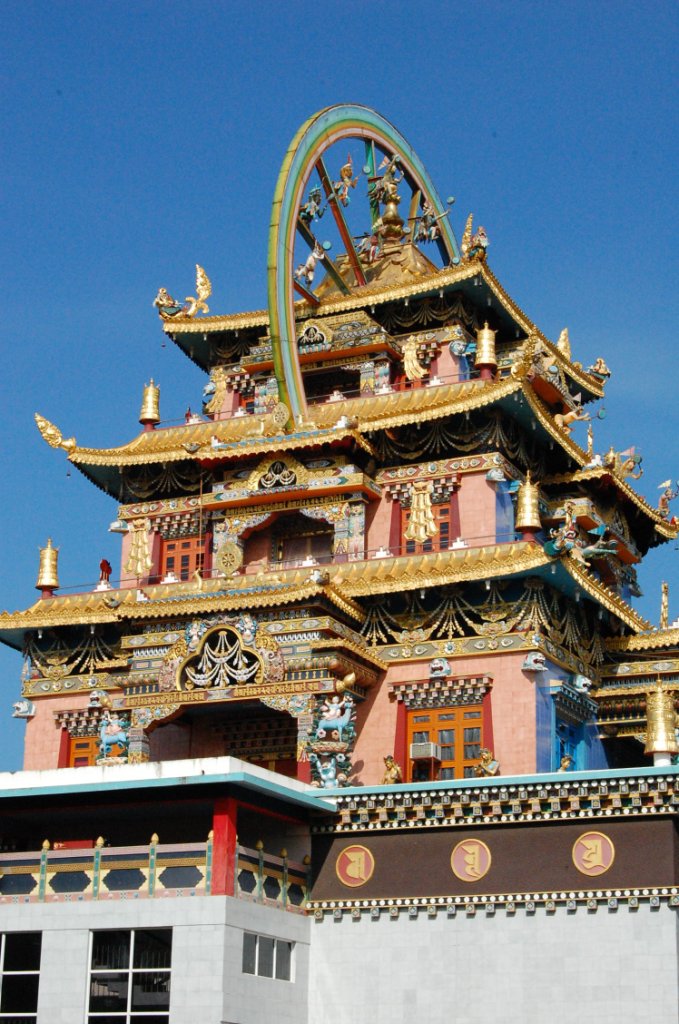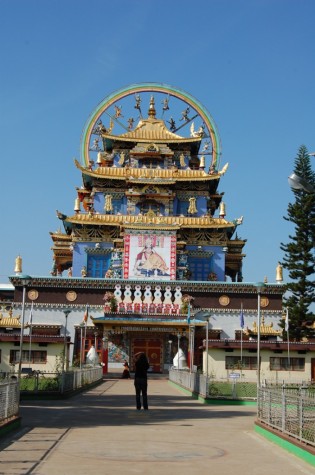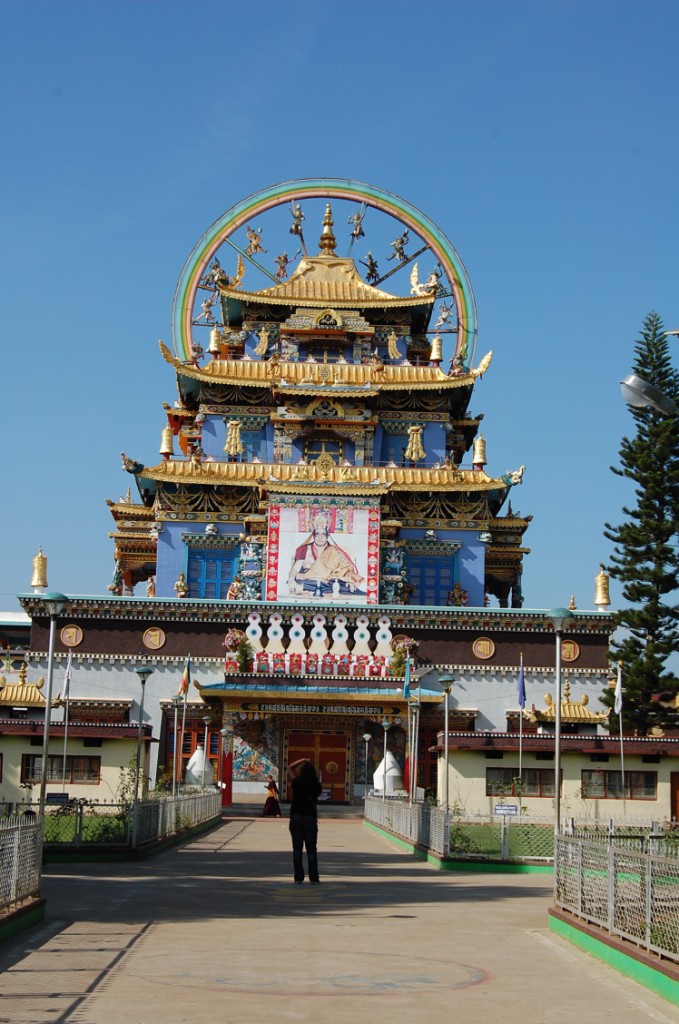The entire church is built in the Gothic style is one of the largest Cathedrals in South Asia. The Church has the relic of the 3rd century Saint Philomena that is in a beautiful catacomb that is below the main altar. The construction of the church was completed under Bishop Rene Fuga’s supervision. At that time Thamboo Chetty, was the Huzur Secretary to the Maharaja of Mysore, heard about the greatness of Saint Philomena and obtained a relic of the saint from Peter Pisani, Apostolic Delegate of the East Indies in 1926. After obtaining the relic it was handed over to Fr. Cochet. The next year a new state of Saint Philomena was brought from France.
If you are out for sightseeing in Mysore , St. Philomena’s church is an obvious destination for you. Situated at a distance of 3 kms from the city bus stand and 2 kms from the Mysore Palace, the church is one major tourist attractions of Mysore, Karnataka.
